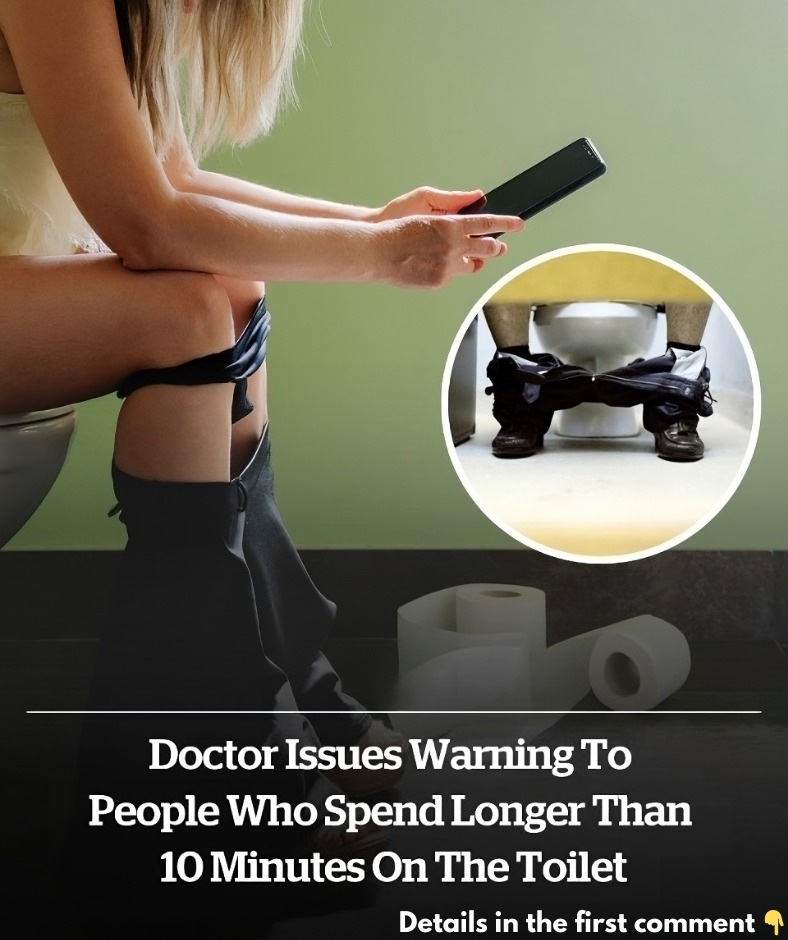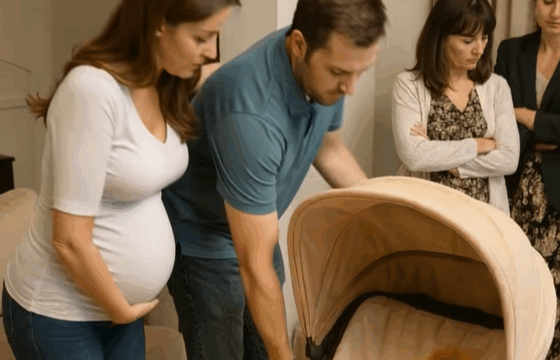We’ve all been there—lingering on the toilet for a little too long, scrolling through our phones, reading a magazine, or just enjoying a quiet break from our hectic lives. But according to health experts, spending more than 10 minutes on the toilet could be doing more harm than good. Let’s explore the health risks associated with extended bathroom sessions, why you should limit your time, and how to develop healthier habits.

The Dangers of Sitting Too Long on the Toilet
Dr. Roshini Raj, a gastroenterologist at NYU Langone, cautions against sitting on the toilet for more than 10 minutes at a time. Why? Prolonged toilet sitting can lead to several uncomfortable and even serious health problems.
Hemorrhoids and Pressure on the Rectum
One of the biggest risks of staying on the toilet for too long is the increased likelihood of developing hemorrhoids. Hemorrhoids are swollen veins in the rectum or anus that can become irritated, painful, and even bleed. Dr. Raj explains that sitting on modern toilets creates a problematic angle, with your anorectal area positioned lower than your thighs. This unnatural position adds pressure to the veins, increasing the risk of hemorrhoids over time.
Muscle Strain and Pelvic Floor Issues
Extended toilet time can also strain your pelvic muscles. These muscles are critical for supporting your organs and controlling your bladder and bowel movements. Sitting for long periods can weaken the pelvic floor, leading to problems like urinary incontinence or, in more serious cases, pelvic organ prolapse.
Why Bringing Your Phone to the Bathroom Is a Bad Idea
Let’s face it—many of us take our phones into the bathroom. A survey from NordVPN found that 65% of people admit to using their phones while on the toilet. While it may seem harmless, this habit can lead to more than just dirtying your screen.
Increased Exposure to Germs
Bathrooms are full of bacteria and other pathogens. When you handle your phone in this environment, you risk transferring those germs onto your device. These germs can later make their way to your hands, face, and other surfaces, increasing the likelihood of illness. Dr. Raj emphasizes that many people unknowingly expose themselves to harmful bacteria, increasing the risk of food poisoning and other infections due to poor bathroom hygiene.
Longer Sitting Time
Using your phone while on the toilet can also cause you to lose track of time. Whether you’re scrolling through social media or watching videos, staying on the toilet for too long increases the pressure on your anorectal area, raising your risk of hemorrhoids. By leaving your phone outside, you’ll likely finish your business faster and avoid the health risks associated with prolonged sitting.
How Long Should You Spend on the Toilet?
According to Dr. Raj, the ideal time spent on the toilet should be under 10 minutes. If you’re consistently taking longer, it could be a sign of constipation or difficulty passing stool, which might indicate an underlying issue. In these cases, you should consult a healthcare provider. You may also need to consider adding more fiber to your diet and drinking more water to improve your digestive health.
Healthy Bathroom Habits
Aside from limiting your time on the toilet, there are a few additional habits you can adopt to make bathroom trips easier and healthier:
- Use a Footstool: Raising your feet on a footstool helps mimic a natural squatting position, which can ease the pressure on your rectum and support smoother bowel movements.
- Stay Hydrated and Eat Fiber: Drinking plenty of water and eating fiber-rich foods are key to avoiding constipation, which can lead to extended bathroom time.
- Leave Your Phone Outside: Not only will this improve your hygiene, but it will also help you finish up faster and reduce the amount of time you spend on the toilet.
How the Design of Toilets Contributes to the Problem
Standard toilets aren’t designed for optimal bowel movements. Unlike a squatting position, which opens up the anorectal angle and makes elimination easier, sitting on a regular toilet keeps this angle closed, creating strain. This is why footstools, which replicate the squatting position, have become popular in recent years—they reduce strain and make bathroom time more efficient.
Conclusion: Time to Rethink Your Bathroom Routine
Next time you’re tempted to linger in the bathroom or bring your phone along, think about the potential health consequences. Sitting for extended periods can lead to issues like hemorrhoids, pelvic muscle strain, and exposure to harmful bacteria. By limiting your toilet time to under 10 minutes, staying hydrated, and leaving your phone outside the bathroom, you’ll protect your health and improve your overall bathroom habits. Small changes to your routine can make a big difference for your digestive health and well-being. Plus, a little time away from your phone might be the mental break you need.





